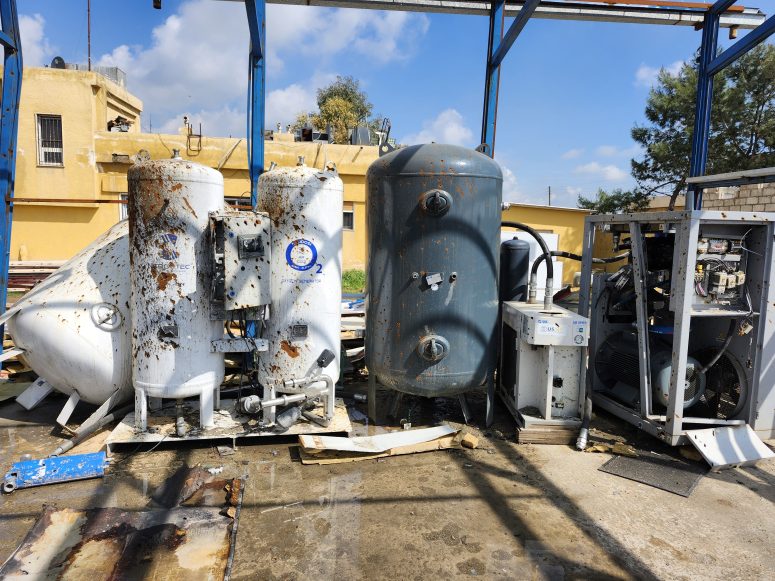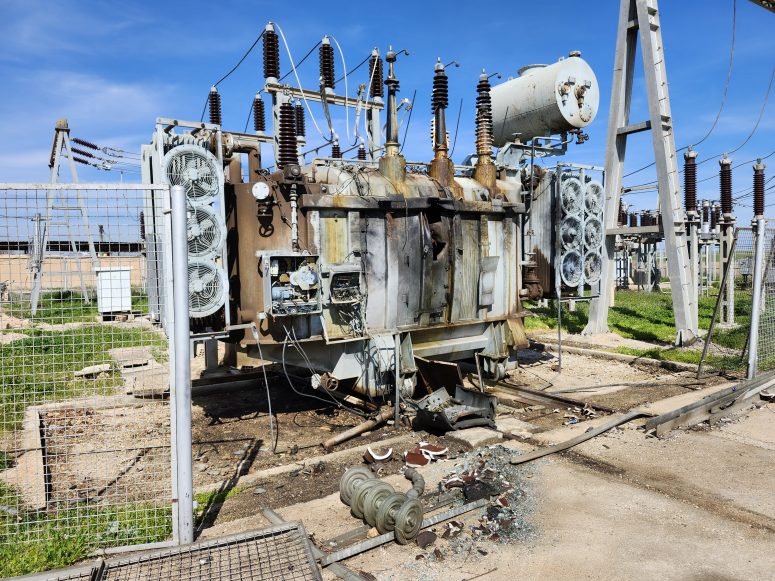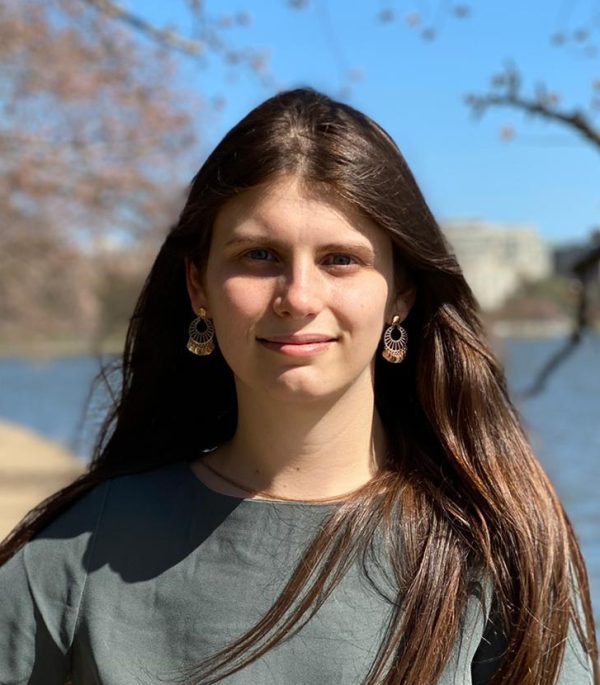
Turkey Targets USAID Projects in Northeast Syria
Two civilian facilities in northeast Syria that received USAID support were destroyed in Turkish drone strikes in December 2023 and January 2024. The attacks followed Turkish Foreign Minister Hakan Fidan’s October 2023 declaration that critical infrastructure in the Kurdish-majority region constituted “legitimate targets” for Turkish forces.
Turkey sees the prospect of Kurdish autonomy on its southern border as an existential threat. Since Turkish president Recep Tayyip Erdogan’s government abandoned peace talks with the Kurdish movement in 2015, it has conducted two major ground incursions and countless aerial attacks against the Syrian Democratic Forces (SDF) and the Autonomous Administration of North and East Syria (AANES). These campaigns are intended both to degrade and destroy the AANES and SDF and to forcibly displace the Kurdish communities that support them from the region.
The United States, though, sees the SDF as the only force capable of keeping the Islamic State down. In March 2019, Coalition and SDF forces seized the last strip of Syrian territory from the jihadist group at Baghouz, ending the territorial caliphate. Right now, about 900 U.S. troops are still stationed in northeast Syria, where they engage in joint operations against Islamic State cells with their SDF partners.
Washington’s engagement with the realities of civilian life in the region, though, has been much more limited. Turkish pressure appears to be one main reason why. Basic assistance intended to help war-torn communities survive and recover gives Syria’s Kurds a chance at a stable future. That, to Turkey, is unacceptable.
“U.S. officials on the ground were very careful regarding the geographical distribution of stabilization projects in northeast Syria…Since 2017, following the liberation of Raqqa, [Department of State] figures who observe and lead stabilization programming have intentionally avoided support for projects located in the northern, mostly Kurdish-majority areas. They focus instead on Arab-majority regions like Raqqa and Deir Ez-Zor, out of fear of angering the Turkish government,” a local NGO worker who spoke with the Kurdish Peace Institute on the condition of anonymity said.
The NGO worker estimated that “around 90%” of U.S. stabilization programming goes to Deir Ezzor and Raqqa alone.
“One senior U.S. official said, ‘I’m briefing Turkish officials on my way into Syria, and the moment I’m out. Yet, they remain so suspicious.’ For years, proposals and calls from the northern regions like Kobani, Tal Abyad, and Hasakah fell on deaf ears, despite being in need, liberated from ISIS, and facing major essential services challenges. The main reason was and remains the Turkish objection to investment in border areas under the control of the Kurdish-led Self Administration,” they assessed.
After the U.S. lifted sanctions on northeast Syria in May 2022, Turkish president Recep Tayyip Erdogan began to threaten further military intervention in the region, killing prospects for engagement from already risk-averse investors. Just months later, in November 2022, Turkey attacked critical infrastructure for the first time, causing millions of dollars in damages.
In December 2023 and January 2024, Turkish drones once again targeted dozens of critical infrastructure sites in the region, including oil fields and power stations as well as factories and small businesses. The strikes left millions of civilians without access to fuel, electricity or clean water.
For the first time, Turkey began to target U.S. assistance by means beyond political pressure. Among the infrastructure sites destroyed in these bombing campaigns were a medical oxygen bottling plant in Qamishlo and a power station in Darbasiyah — both of which received USAID support. When the Kurdish Peace Institute visited the sites in March 2024, both remained non-operational.
The Qamishlo oxygen bottling plant was originally opened in 2022 next to Qamishlo’s Jiyan COVID-19 Hospital, with funding from USAID’s Building Resilient and Inclusive Communities in Conflict (BRICC) program.
USAID had consulted with the Jazira Region Health Commission to identify gaps in the local COVID-19 response. The lack of medical-grade oxygen was a serious problem.
“Many public hospitals and health centers in the northeast were unable to access the needed quantities of oxygen due to demand surpassing production,” stated a USAID press release announcing the opening of the plant.
“Specifically, the existing oxygen-bottling plants in northeast Syria were old and not properly maintained over the years to be able to meet production needs. Although oxygen cylinders are provided for free for public medical facilities and sold at a reduced price to private hospitals and clinics, there was not enough production of oxygen to meet patient needs,” the press release continued.
While COVID-19 subsided, the need for medical-grade oxygen did not. Respiratory illnesses are common in Jazira, where decades of oil extraction and unsustainable agriculture and twelve years of war have polluted the air and water. Other oxygen facilities in the region had fallen into disrepair. Equipment of the quality that USAID could provide was difficult for local authorities to import on their own.
So, in 2023, the facility was rebuilt on a new site in Qamishlo: a vacant lot behind the city’s only public kidney dialysis center. Behind the fence is a quiet residential neighborhood. Across the street is a public school.
Rafe Abbas, the director of the dialysis center, shared several images from October 2023 with the Kurdish Peace Institute, showing the construction of the oxygen bottling plant on the new site. He said that it had operated for just 10 days at its new location before the December 25th attack.
Today, the plant lies in ruins. The metal framework of the structure that covered the tanks barely holds together. Workers have collected the destroyed roofing in a pile on the lot. The equipment, burnt and pockmarked from shrapnel, still bears stickers reading ‘USAID – from the American people.’

The strikes also impacted the dialysis center’s operations, Abbas said. They were forced to close for several days. During that time, a patient passed away. Patients and medical staff feared returning to work knowing that they could be attacked at any time.
Less than one month after the strike on the oxygen plant, Turkey bombed a second USAID-supported site: the sole power station supplying the city of Darbasiyah, located between Amude and Serekaniye on the Syrian-Turkish border.

The Darbasiyah station provides electricity to six to seven thousand households in Darbasiyah and about 200 surrounding villages. It is also the direct supplier of electricity to the critical Alouk Water Station, which is the primary source of drinking water for over half a million people in the province of Hasakah.
On January 15th, 2024, at about 8:40 PM, a Turkish drone struck one of the Darbasiyah power station’s transformers, an employee named Ciwan told the Kurdish Peace Institute. Ten minutes later, Ciwan recounted, a second strike hit a second transformer. One worker was injured.
Ciwan shared several images of the damage with the Kurdish Peace Institute. He also shared a cheerful post from USAID Syria on Facebook, dated February 4, 2022 — almost two years before the Turkish attacks.
“Great news! With support from the United States Agency for International Development, the Communications and Energy Authority of the Jazira Region completed the rehabilitation of the Darbasiyah power plant, doubling its electricity generation capacity from 10 to 20 megawatts,” the post read.
According to one U.S. government report, the need to ensure stable electricity to Alouk was the primary motivation for the project.
“USAID reported that it was addressing the acute need for stable electricity transmission to the Alouk Water Station, which provides drinking water to a large portion of northeast Syria’s Jazeera region. During the quarter. USAID supported repairs to the Darbasiyah Power Station, the transmission station supplying power to Alouk, which was damaged by a fire,” the Operation Inherent Resolve Lead Inspector General Report to Congress covering October through December of 2021 stated.
Alouk Water Station is located in territory that came under Turkish control in 2019’s Operation Peace Spring. Since then, Turkey has repeatedly shut it down, causing a devastating water crisis in AANES-held Hasakah and surrounding areas.
Turkey’s January 2024 strike on the Darbasiyah station completely severed Alouk from the grid, threatening access to drinking water for at least 610,000 people.
“Residents are now relying on water trucking coming from private water sources connected to generators. The decreased availability of fuel in the market is expected to impact the price and availability of drinking water in the affected communities,” warned the NES NGO forum, a coalition of humanitarian NGOs operating in northeast Syria, in a January 2024 report.
Turkey does not take responsibility for civilian harm in its cross-border military operations. But experts believe Turkish authorities are well aware of the nature of their targets.
“There is little doubt that Turkey is aware of the civilian use of several facilities bombed, including the oxygen bottling plant and power station. They have a vast network for intelligence collection on key persons and locations in northeast Syria, so they will no doubt be aware [of] what the location is being used for. By nature, these are civilian infrastructure. There is not any military value that justifies attacking these plants in the current state of affairs,” said Wim Zwijnenburg, Humanitarian Disarmament Project Leader at PAX, a Dutch peacebuilding organization.
Zwijnenburg believes Turkey could reasonably have been aware that these two sites had received U.S. support. “In general terms, USAID is clear [about] what kind of support they are giving to Northeast Syria, including types of infrastructure, and also provides details on the type of locations. A simple Google search shows that USAID is providing funding to the oxygen plant,” he told the Kurdish Peace Institute.
The local NGO worker concurred. “Turkish strikes against such locations are not arbitrary at all. They collect intelligence before selecting targets. These two projects are among very few by USAID [in Kurdish-majority border regions]. The others are a few schools in Christian and Yazidi communities,” they said.
After the December airstrikes, the NES NGO Forum warned that further attacks on infrastructure would “negatively impact the delivery of humanitarian aid in Northeast Syria.” Attacks on the few infrastructure sites near the northern border publicly known to have received U.S. assistance might exacerbate the trend — at a time when Turkish escalation has left more Syrians in this region in need than ever.
“The result of the airstrikes on civilian infrastructure will be a set-back of the work to improve the socio-economic and living conditions for civilians that international donors and humanitarian organizations are trying to achieve. The strikes will also discourage further investments in rebuilding a society that has been severely affected by the war. As a consequence, the humanitarian situation will grow worse…[This] sets in motion a downward spiral that worsens unemployment [and] impacts security, which leads to more corruption and migration,” warned Zwijnenburg.
Such restrictions on assistance will further Turkey’s goals of weakening local authorities and displacing Kurdish communities. That means further threats to international aid projects are likely.
“The message from Turkey is clear: there is no stabilization in this region without Turkish consent. Without it, it will continuously undermine any efforts by local and international actors in all aspects; security, service provision, governance, and development,” said the NGO worker.
This report is a project of the Kurdish Peace Institute’s Qamishlo office.






